Day 22 (July 27)
Caribou passes below the bank during breakfast, the clicking of hooves on rock and fuzzy antlers only audible and visible sign of his passing. With continued clear skies and light tail winds, mosquitoes pester our faces throughout the day. What challenging country! Hot-cold-wet-dry all in a day - the extremes and rapidity of change boggles the system to adapt – this country is full of surprises.
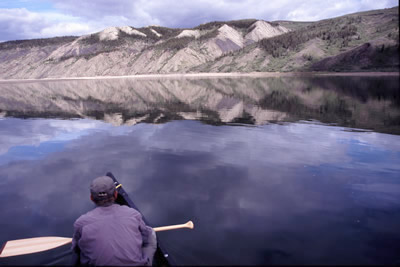
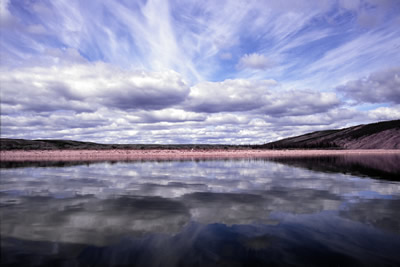
High up along the bare slopes, a bald eagle hunts, soaring with the thermos. Harriers and terns break the monotony of low banks. Molting flightless mergansers proceed us downstream, frantic in their efforts to escape. A thin and sickly caribou barely nods as we drift by. Moles, freckles in red, orange and core randomly appearing on high rounded slopes. Land has softened, mellowed from sharp crags of canyons and upstream cliffs.
The river seems to disappear under a black sheer cliff face. We approach with caution, ignoring the caribou cooling himself at waters edge. It‘s melting permafrost, continuously dripping. The dark bands are a mix of ice and sediment. Above, the tundra looks like a cheap carpet, sliding over the cliffs edge, trees dangling, roots exposed. Our clear Horton has turned murky with the sediment. It’s quiet except for drip drip and then a small splash into the river.
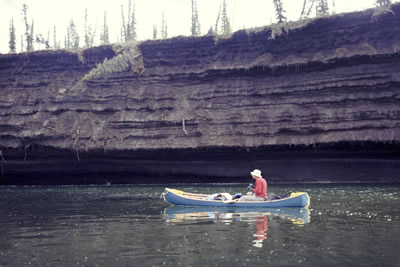
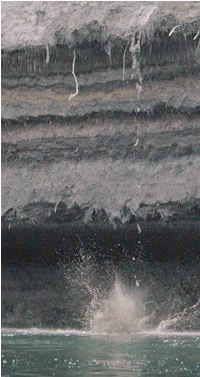
For the first time, the waters are clogged with whole floating trees, delimbed trunks and branches. Some wood is lodged along the shore from higher flood or melt water times. The sulpher smell is quite strong. Drinking directly from the river becomes unpalatable. Incoming streams stain rocks red, orange and yellow. Soft muck oozes between rocks.
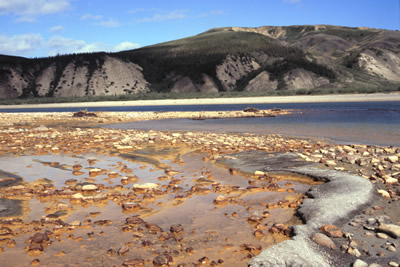
Campsites seem to be scarce. Finally we locate something suitable high up on a bank between small willows and hummocks. The floor of the tundra tunnel is paved with small reddish stones, there is a bouquet of dried grass in the center. It’s 139 km until the end of the river and I’m already feeling somewhat sad.